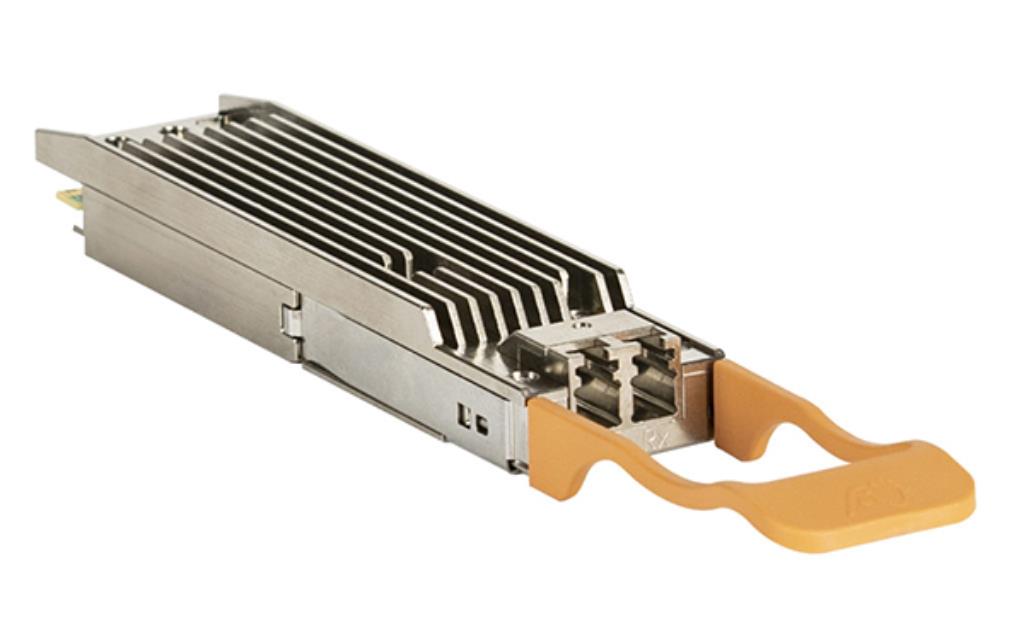The Octal Small Form-factor Pluggable (OSFP) represents a pivotal advancement in the world of networking technologies. It is designed to support the burgeoning demand for higher bandwidth in data centers and high-speed computing environments. This interface stands out for its high-density, thermal efficiency, and scalability, thus offering a robust solution for next-generation network infrastructure. By accommodating a wide range of optics and copper cables, OSFP plays a critical role in facilitating diverse networking architectures. The following sections will delineate the technical specifications, applications, and comparative analysis with other contemporary interfaces, providing an insightful exploration into the capabilities and advantages of OSFP technology.
What is OSFP and its Importance in Connectivity?
Understanding the OSFP Module and its Functionality
The Octal Small Form-factor Pluggable (OSFP) module is a critical component in the architecture of modern, high-speed networks, designed to meet the demanding requirements for bandwidth and density in data centers and enterprise networking environments. At its core, the OSFP module integrates electrical to optical conversion functionality, enabling the transmission of data over fiber optic cables, which significantly increases the reach and speed of network connections. Its design incorporates an improved thermal management system that allows for reliable operation even at elevated temperatures, making it suitable for densely packed switches and routers. Furthermore, the OSFP specification supports a multitude of data rates, ranging from 200 Gigabit to 800 Gigabit per second pathways, providing unprecedented scalability for network infrastructure. This flexibility in supporting a wide array of speeds and connections types positions the OSFP module as a versatile solution for advancing network performance and efficiency.
Exploring the Optical Connectivity with OSFP
Optical connectivity facilitated by OSFP modules plays a pivotal role in addressing the exponential growth in data traffic and the subsequent need for higher network throughput. By leveraging advanced modulation techniques and coherent optics, OSFP modules can transmit vast amounts of data over considerable distances with minimal signal degradation. This capability is particularly beneficial in scenarios such as long-haul transmissions, metropolitan area networks, and inter-data center connectivity, where maintaining signal integrity and reducing latency are paramount. Additionally, the OSFP’s backward compatibility feature ensures seamless integration with existing network infrastructure, promoting a cost-effective transition to higher performance networking solutions. Through these technical advancements, OSFP modules significantly contribute to the enhancement of optical connectivity, paving the way for more efficient, reliable, and scalable networks.
How Does OSFP Compare to Other Transceiver Modules?
When analyzing the suitability of optical modules for data center environments, it’s essential to compare the Octal Small Form-factor Pluggable (OSFP) and the Quad Small Form-factor Pluggable Double Density (QSFP-DD) modules, focusing particularly on their form factors and compatibility with data center infrastructure. The OSFP module, with its slightly larger form factor, offers improved thermal performance due to its increased surface area, which is an essential feature for supporting high-power applications and longer reach capabilities without compromising signal integrity. This advantage makes OSFP modules particularly suitable for applications requiring higher bandwidth and thermal efficiency in densely packed network environments.
In contrast, the QSFP-DD module maintains backward compatibility with the existing QSFP form factors, allowing for a more straightforward integration into current data center architectures. This compatibility is advantageous for data centers looking to gradually scale their operations without the need for extensive modifications to their existing infrastructure. The double density feature of QSFP-DD modules effectively doubles the number of high-speed electrical interfaces that can be supported by the module, enhancing its bandwidth capacity while maintaining a compact form factor conducive to high-density configurations.
Both the OSFP and QSFP-DD modules play critical roles in the evolution of data center connectivity, offering different benefits tailored to the specific needs of network infrastructure development. The choice between OSFP and QSFP-DD ultimately depends on individual data center requirements, including considerations of bandwidth needs, thermal management capabilities, and the importance of backward compatibility for seamless integration into existing network ecosystems.
Benefits and Performance Metrics of OSFP
Examining the Thermal Performance of OSFP Systems
One of the standout characteristics of the OSFP (Octal Small Form Factor Pluggable) system is its exemplary thermal performance. The design of OSFP modules incorporates an enhanced heat-sink mechanism, facilitating more efficient heat dissipation. This thermal efficiency is pivotal for maintaining the reliability and longevity of high-power networking devices, especially in environments with stringent thermal management requirements. Effective heat dissipation ensures that the modules operate within their optimal temperature range, thus minimizing the risk of thermal-related performance degradation over time.
Enhancing Signal Integrity with OSFP Connectivity Solutions
Signal integrity is paramount in high-speed data transmission environments. OSFP modules are engineered to provide superior signal integrity, even at higher data rates. This is achieved through advanced electrical design practices that minimize signal loss and crosstalk between channels. Enhancing signal integrity not only supports higher data rates but also increases the reach of connections without necessitating active optical cables or amplification, thereby offering a cost-effective solution for expanding network infrastructure.
Measuring the Data Rate Efficiency of OSFP vs. QSFP-DD
When comparing the data rate efficiency of OSFP and QSFP-DD (Quad Small Form Factor Pluggable – Double Density) modules, it’s essential to consider the bandwidth capacity relative to their physical size. OSFP modules, with their focus on high-power applications and superior thermal management, enable support for higher data rates in a single form factor. Conversely, QSFP-DD modules leverage their double density advantage to increase bandwidth by facilitating more electrical interfaces within a compact size, albeit with potentially higher thermal profiles and signal integrity considerations. The selection between OSFP and QSFP-DD modules should be made based on specific network requirements, balancing the need for high data rates, efficient thermal management, and the spatial constraints of the networking environment.
Exploring the Innovations in 400G Connectivity with OSFP
Demystifying PAM4 Technology and OSFP Transceivers
Pulse Amplitude Modulation 4-level (PAM4) technology represents a significant advancement in signal modulation, enabling the transmission of two bits of digital information in each symbol, effectively doubling the data rate possible over a single wavelength compared to traditional Non-Return to Zero (NRZ) modulation. This technology is instrumental in optimizing the performance of Optical Signal Form Factor Pluggable (OSFP) transceivers, which play a pivotal role in 400G network infrastructure. PAM4’s increased signal complexity, however, introduces new challenges in signal integrity and noise tolerance, necessitating enhanced error correction techniques and advanced signal processing capabilities. By leveraging PAM4 technology, OSFP transceivers can effectively meet the growing demand for higher bandwidth and data rates in modern data centers and telecommunications networks, supporting the deployment of 400Gbps interfaces without exponentially increasing the cost per bit transmitted.
Advantages of Using OSFP Cable Assemblies for 400G Networks
OSFP cable assemblies, designed to facilitate 400G connectivity, offer a myriad of advantages, making them well-suited for next-generation high-speed data centers and networking infrastructures. Firstly, the increased bandwidth capacity of OSFP assemblies accommodates the burgeoning data transmission requirements, while their advanced thermal management design ensures reliable performance under high-power operations. Additionally, the compatibility of OSFP modules with PAM4 modulation technology enhances their ability to maintain signal integrity over longer distances, thereby reducing the need for signal amplification and lowering overall network latency. Furthermore, the robust mechanical design of OSFP connectors offers improved durability and ease of handling, which is critical in dense network environments. By integrating these features, OSFP cable assemblies provide a scalable, efficient, and cost-effective solution for deploying 400G networks, marking a significant leap forward in meeting the exponential growth of global data traffic.
Compatibility and Standards in OSFP Technology
Ensuring Compliance with OSFP MSA Standards
In the context of deploying 400G networks utilizing OSFP technology, adhering to the Optical Internetworking Forum’s (OIF) and the Quad Small Form Factor Pluggable Double Density (QSFP-DD) Multi Source Agreement (MSA) standards is paramount. These standards define the specifications for OSFP transceivers and cable assemblies, ensuring interoperability, reliability, and performance across different manufacturers’ products. Compliance with OSFP MSA standards necessitates rigorous testing and verification processes, including electrical interface, form factor, thermal, and electromagnetic interference (EMI) specifications. By ensuring compatibility with these standards, network designers and operators can facilitate seamless integration of OSFP modules into existing infrastructures, optimizing the efficiency and scalability of high-speed networks.
Assessing OSFP Interconnect System for Ethernet Connectivity
The evaluation of OSFP interconnect systems for Ethernet connectivity encompasses several critical considerations. Primarily, the assessment focuses on understanding the module’s capacity to support Ethernet standards, such as the IEEE 802.3bs (200GbE and 400GbE) and IEEE 802.3cd (50GbE, 100GbE, and 200GbE) for various networking scenarios. This involves analyzing the signal integrity at high data rates, power consumption under operational loads, and thermal performance within dense networking environments. Furthermore, compatibility with existing network architectures and the ability to support future upgrades without significant infrastructure changes are essential aspects of this assessment. By thoroughly examining these factors, network architects can ensure that the selected OSFP interconnect system not only meets the current demands for high-speed Ethernet connectivity but is also poised to adapt to evolving network technologies and standards.















